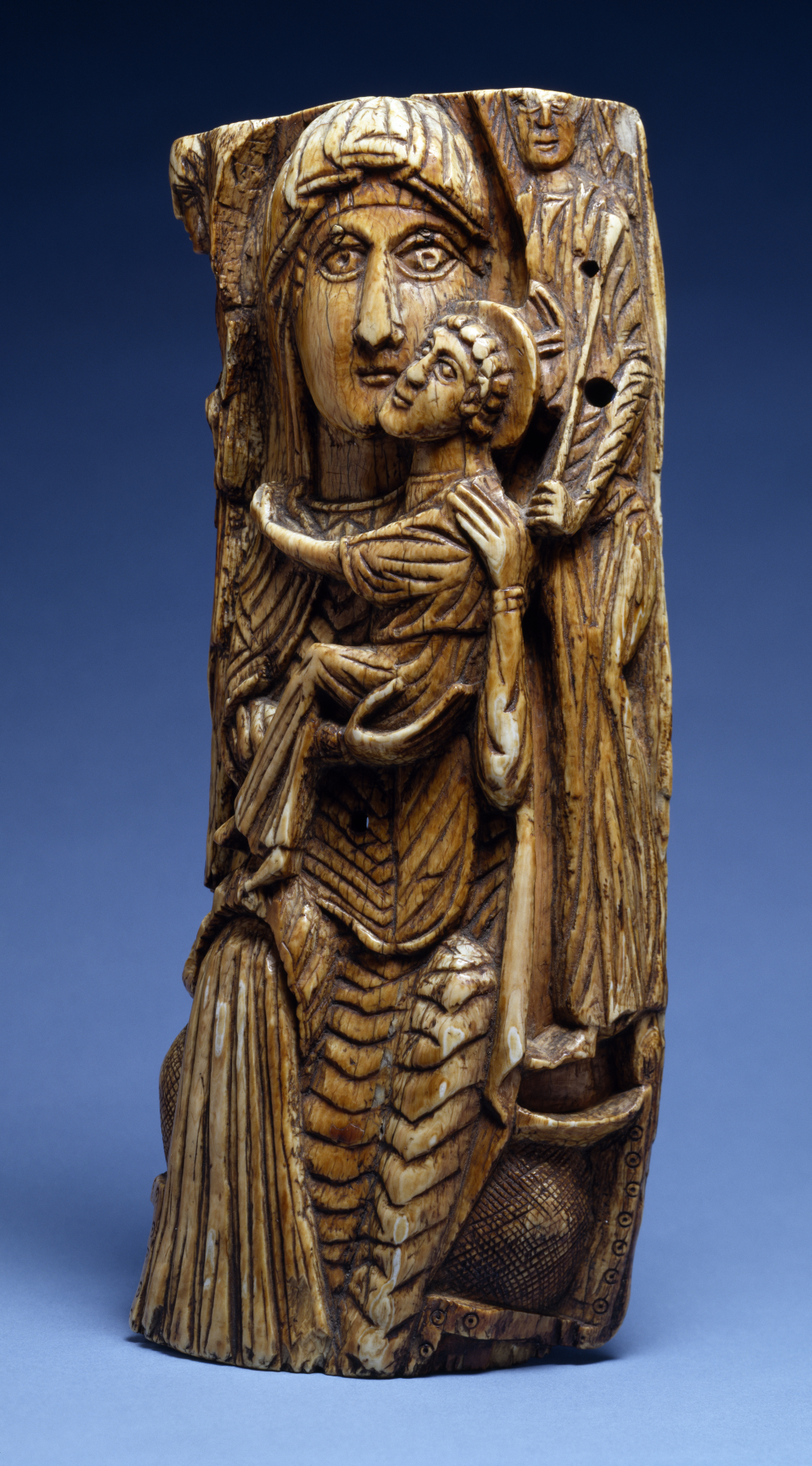Virgin and Child
This unusually large ivory carving, its shape corresponding to the shape of a tusk, shows the Christ Child embracing his mother in a pose of tender intimacy. It is one of the earliest examples of what in later Byzantine times was called Eleousa, or "Virgin of Tenderness." The relief was likely to have been used for private devotion, in either a monastic or domestic setting, as an icon (Greek for "image"). Especially striking and typical of the early medieval period in Christian Egypt are the Virgin's large head, fixed gaze, and angular drapery.
Provenance
Provenance (from the French provenir, 'to come from/forth') is the chronology of the ownership, custody, or location of a historical object. Learn more about provenance at the Walters.
Cologne, 1870s; M.-B. Meyers, Strasbourg, 1877, by purchase; Sale, Hôtel Drouot, Paris, November 26, 1877; Michel Boy, Paris [date of acquisition unknown], by purchase; Sale, Hôtel Drouot, Paris, May 15, 1905, no. 240; Henry Walters, Baltimore, 1905, by purchase; Walters Art Museum, 1931, by bequest.
Exhibitions
| 2007-2008 | Déjà Vu? Recurrence. The Walters Art Museum, Baltimore. |
| 1983-1984 | Ivory: The Sumptuous Art. The Walters Art Gallery, Baltimore. |
| 1947 | Early Christian and Byzantine Art. Baltimore Museum of Art, Baltimore. |
Conservation
| Date | Description | Narrative |
|---|---|---|
| 12/13/1962 | Examination | examined for loan |
| 8/22/2007 | Treatment | cleaned |
Geographies
Egypt (Place of Origin)
Measurements
H: 10 1/4 x W: 4 7/8 x D: 1 15/16 in. (26.1 x 12.4 x 5 cm)
Credit Line
Acquired by Henry Walters, 1905
Location in Museum
Accession Number
In libraries, galleries, museums, and archives, an accession number is a unique identifier assigned to each object in the collection.
In libraries, galleries, museums, and archives, an accession number is a unique identifier assigned to each object in the collection.
71.297




